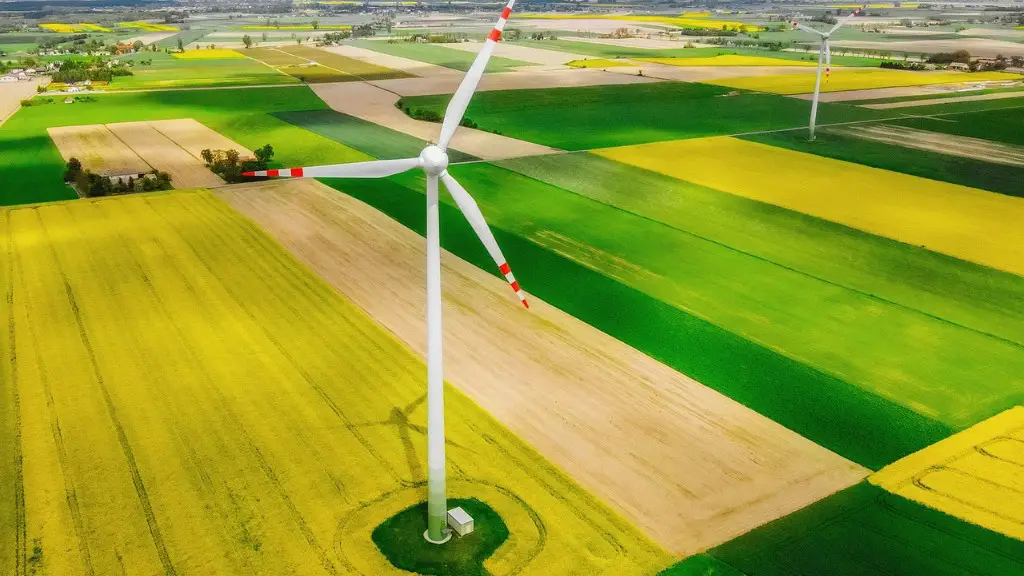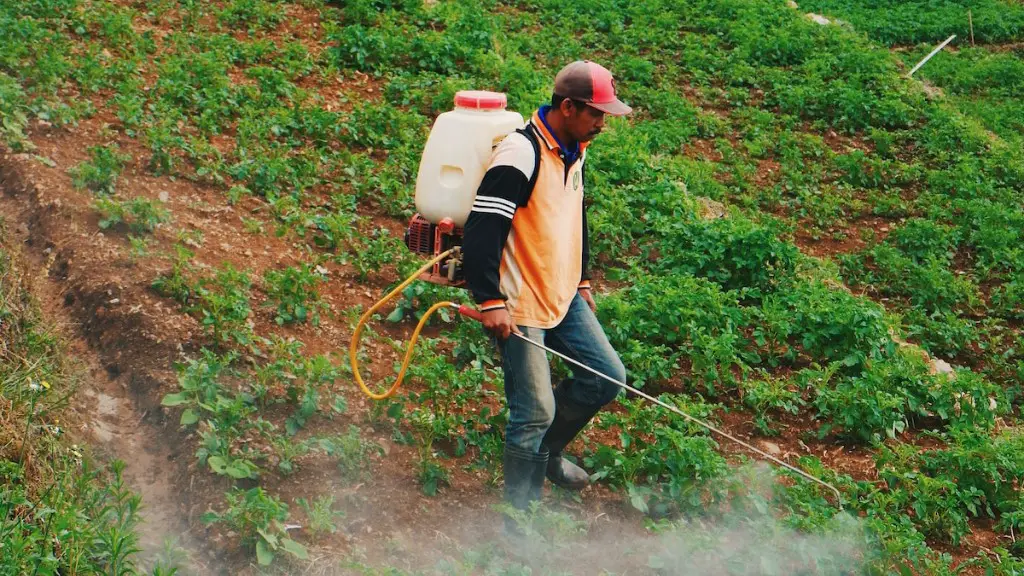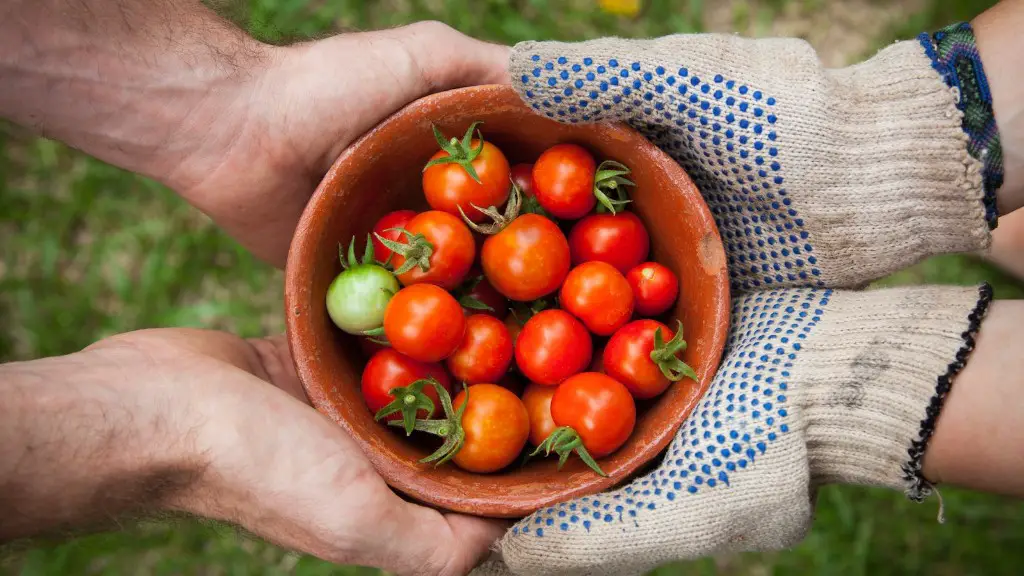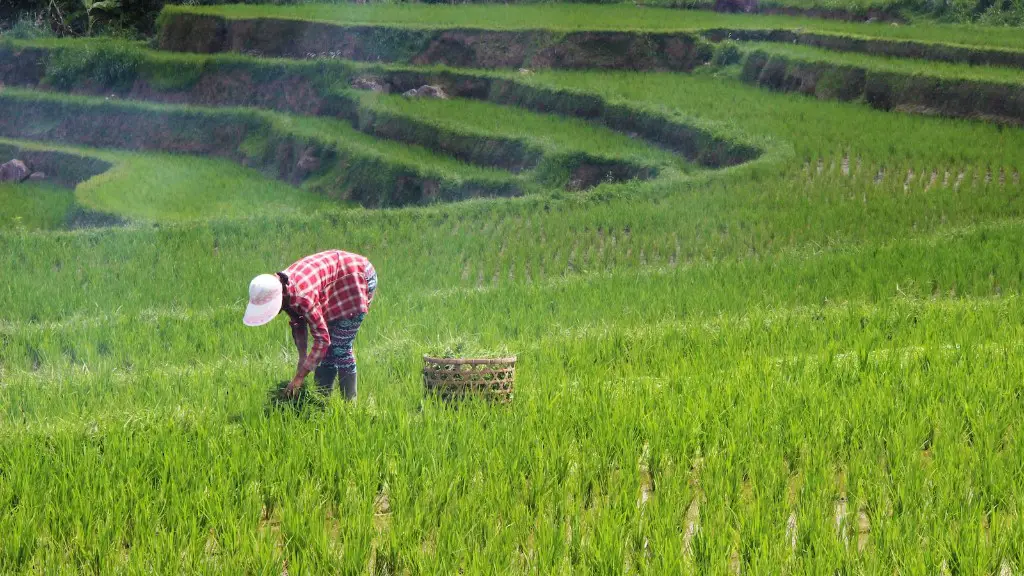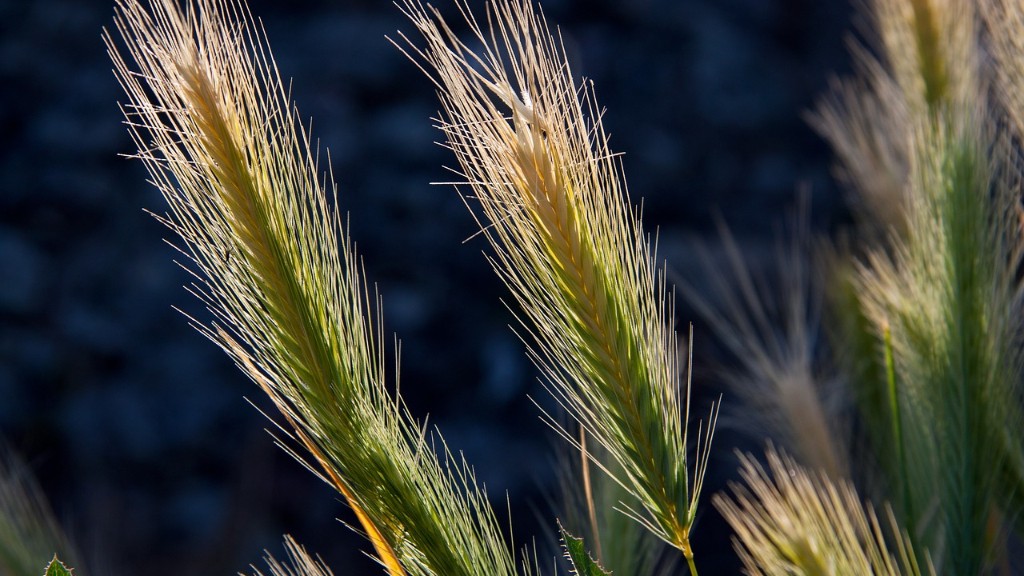Regenerative agriculture is a system of farming principles and practices that aim to regenerate and improve the health of our soils, ecosystems, and dryland. The goal of regenerative agriculture is to create a more productive and sustainable way of farming that can help mitigate and even reverse the effects of climate change.
Regenerative agriculture is a type of agricultural practice that focuses on rebuilding the soil health and fertility. Regenerative agriculture also encompasses the management of water, carbon, and other key resources.
What does regenerative mean in agriculture?
Regenerative agriculture is a type of farming that focuses on rebuilding the soil, improving water quality, and reducing the use of inputs. This type of agriculture has been shown to be more productive and profitable than conventional agriculture, and it also helps to protect and improve the environment.
These incentive programs are designed to encourage farmers to adopt practices that will improve the health of the soil and the environment. The programs provide financial incentives for farmers to implement these practices, which can help to offset the costs of implementing them.
What are the 5 principles of regenerative agriculture
Regenerative farming is a type of agriculture that focuses on rebuilding soil health and fertility. The 5 principles of regenerative farming are:
1. Soil Armor: Soil armor is a layer of living roots and organic matter that protects and enriches the soil.
2. Diversity: A diversity of plant and animal species helps to create a healthy and productive ecosystem.
3. Continual Live Plant/Root: Keeping plants and roots alive throughout the growing season helps to build soil health.
4. Livestock Integration: Incorporating livestock into the farming system can help to improve soil health and fertility.
5. Minimizing Soil Disturbance: Minimizing soil disturbance helps to preserve soil health and fertility.
Regenerative agriculture is a type of farming that focuses on rebuilding soil organic matter and restoring degraded soil biodiversity. This type of agriculture has many benefits, including reversing climate change by sequestering carbon in the soil and improving the water cycle.
What are the 4 practices of regenerative agriculture?
Cover crops and crop rotation are two of basic principles of sustainable agriculture that lead to greater biodiversity. Eliminating or decreasing tillage also helps to promote biodiversity by allowing native plants and animals to flourish. Reducing the use of artificial fertilizers also helps to create a more sustainable and diverse ecosystem. Finally, regenerative grazing management for livestock can help to improve soil health and promote biodiversity.
Regenerative agriculture is a term used to describe farming practices that aim to regenerate the natural resources used in production. This includes practices such as cover crops, minimal soil disturbance, diversified crop rotations, and field buffers.
Cover crops are plants that are grown in between cash crop production in order to improve soil health. Minimal soil disturbance means using practices such as no-till or strip-till to reduce the amount of soil that is turned over. This helps to preserve soil structure and reduce erosion.
Diversified crop rotations help to break up pest and disease cycles, as well as improve soil fertility. Field buffers are strips of land that are planted with grasses or other plants to reduce soil runoff and erosion. Perennial plant strips are also used on contours to reduce soil runoff.
Integrating crops and livestock can also be a part of regenerative agriculture. This practice can help to improve soil health and fertility, as well as provide additional income for farmers.
What is the downside of regenerative agriculture?
Regenerative agriculture is a type of farming that focuses on rebuilding the soil through techniques like cover crops, crop rotation, and composting. While regenerative agriculture has many benefits, there are also some drawbacks that farmers should be aware of.
One disadvantage of regenerative agriculture is that farmers will need to acquire new knowledge and skills. Farming practices are constantly changing, and regenerative agriculture is a relatively new concept. This means that farmers will need to invest time in learning about new techniques and how to implement them on their farms.
Another disadvantage of regenerative agriculture is that less tilling may lead to more unwelcome plants. Tilling the soil is a way to control weeds, but it can also damage helpful bacteria and fungi. When farmers reduce or eliminate tilling, they may find that they have more weeds to deal with. Some farmers compensate by increasing their use of herbicides.
Finally, regenerative agriculture has the potential to lower yields, depending on the crop and local conditions. This is because regenerative agriculture relies on techniques like cover crops and crop rotation, which can require more land. In some cases, lower yields may be offset by the higher quality of the produce.
The above mentioned activities of Conventional agriculture are depleting the quality of soil and also causing imbalance in the ecology. The release of carbon into the atmosphere is affecting the climate and leading to various environmental issues.
How much land do you need for a regenerative farm
If you have a 3000 square foot or some 300 square meter lot, you can have a profitable nursery with as little as 01 to 025 of an acre. You can grow a variety of plants and even use some of the space for other commercial purposes. Just make sure that you have the necessary permits and that your business is zoned for this type of activity.
Regenerative farmers employ no-till practices to minimize soil disruption and maximize crop yield. Soil health is improved by using organic matter to build soil fertility and by using crop rotation to break pest and disease cycles. When planting crops, regenerative farmers reduce their reliance on synthetic inputs by using locally-adapted seed stock, compost, and diversified planting techniques. Crop diversity is another key practices for reducing complexity and improving resilience on the farm.
Is regenerative agriculture the solution to climate change?
Regenerative farming aims to improve the ecosystem by restoring degraded soil, capturing more carbon dioxide, and reversing climate change impacts. Practices include minimizing soil disturbance from tilling and chemical inputs, increasing biodiversity, and covering the soil. By using these practices, farmers can improve the quality of the soil and make it more sustainable.
Regenerative gardening is a type of gardening that strives to rebuild topsoil and restore ecosystem functions. It is based on the principles of agroecology and aims to create a more sustainable and environmentally friendly approach to gardening.
Here are 10 tips for practicing regenerative gardening:
1. Refrain from tilling
Tilling is a common gardening practice that involves breaking up the soil with a plow or other tool. However, tilling can actually damage the soil by disrupting its structure and damaging delicate roots.
2. Feed your plants from your compost pile
Compost is a great way to fertilize your garden without using chemical products. You can make your own compost pile using kitchen scraps and other organic materials.
3. Plant a diverse crop
Diversity is key in a regenerative garden. Planting a variety of crops helps to create a healthy ecosystem that can better withstand pests and diseases.
4. Practice companion planting
Companion planting is a type of gardening where different plants are grown together for mutual benefit. This type of planting can help to improve soil health and deter pests.
5. Utilize cover crops
Cover crops are plants that are grown to protect and improve
Can you do regenerative agriculture without animals
There are a number of plant-based brands that are sourced from regenerative farms. Regenerative agriculture is not exclusive to livestock farming. Milkadamia is a plant-based brand that is known for its non-dairy milk products made from macadamia nuts. The brand has publicly committed to regenerative farming.
Sustainable practices aim to maintain systems without degrading them, while regenerative practices involve using management techniques to restore the system to improved productivity. Both approaches are important for the long-term health of our environment.
How long does it take for soil to regenerate?
It can take up to 500 years to build an inch of topsoil. This is a long time, but it is necessary in order to have healthy soil. Meanwhile, it is important to take care of the soil we have.
Regenerative farming is a type of agriculture that focuses on rebuilding the soil. This type of farming does not till the land, and does not use pesticides or herbicides. Regenerative farming keeps the soil covered with cover crops and or hay/mulch/leaves, which helps to protect and improve the quality of the soil.
What does a regenerative farm look like
Regenerative farms seek to mimic the way ecosystems function in the natural world. They may vary crop rotations, plant multiple species of cover crops together, grow diverse forage in pastures, and maintain permanent vegetation (conservation cover) in some areas of the farm. The goal is to keep living roots in the soil as much as possible so that the soil can continue to build fertility and store carbon.
Fertilizer still has its place in regenerative agriculture, but its use must be judicious in order to rebuild soil biology and reduce the need for fertilizer. By working to understand the natural processes that occur in soil, farmers can help to promote the growth of healthy plants and improve soil quality over time.
Conclusion
Regenerative agriculture is an ecological farming system that seeks to regenerate topsoil health and promote overall ecosystem health. The maintenances or improves soil quality by using practices such as crop rotation, cover crops, composting, and limited tillage. These practices help to improve water retention, nutrient uptake, and soil carbon storage while crowding out weeds and reducing the need for chemical inputs.
Regenerative agriculture definition refers to an agricultural system that focused on rebuilding soil health and ecosystem vitality. The key to regenerative agriculture is working with nature, not against it.
